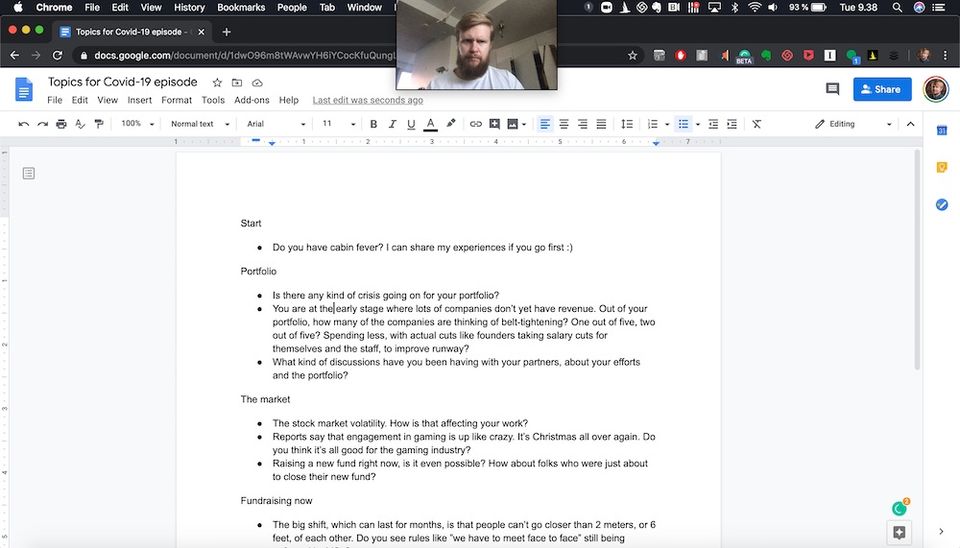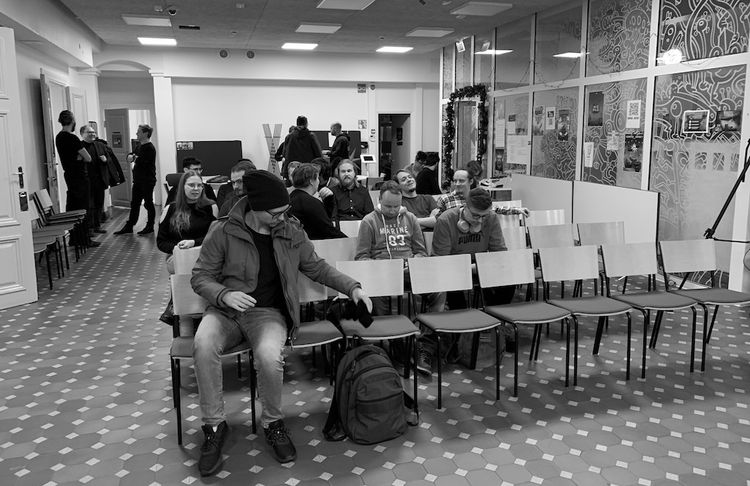How To Pitch Over Video Calls

Here’s a couple of funny screenshots that were recently (May 2020) shared on Twitter, regarding video calls.

And this one:
”I’ve been thinking a lot about Zoom vs in-person. For me the biggest difference is Zoom is “all business.” If I do a 1hr lunch w/someone & we cover our agenda in 40 min, then we’ll chit-chat for 20 min. No one leaves in the middle of lunch. On Zoom, ppl just end the chat early.”
But seriously, things have changed so much during the Spring of 2020.
Since the coronavirus landed all over the world, investors have been making investment decisions without seeing the founders physically. With in-person meetings being a distant memory, investors and founders, who are hoping to engage and connect properly, will have to embrace the change in format and ensure that they approach the pitch process eyes wide open. It’s not business as usual on either side and pretending it is won’t end well.
Understanding the video call pitch
I’ve been primarily using Zoom for all my meetings and podcast recording sessions for the last year. In the past two months, I’ve learned a lot from having back-to-back Zoom meetings, as everyone has figured out that it’s a great way to reach out. I wanted to look at the best practices that I’ve observed from founder/investor interactions over video calls through the less of how I’d pitch to an investor over a Zoom call.
Here are nine ways to make sure that founder & investor meetings over video call work in your favor.
#1 Give room for the conversation
In every investor meeting, video or not, the founder should expect an engaged and fruitful conversation to happen. The investor will be talking and asking questions. As the founder, you need to allow this conversation to happen. Leave an ample amount of time on the call for this conversation. Think that max. 30% of the call will be spent on a screen-shared pitch presentation.
To get into a two-way dialogue, this is what I’ve seen work well: Ask a question to the participants early on, to try and encourage interaction and two-way communication to happen organically. This way, you’ll eliminate a monologue from happening.
#2 Good setup
Tools: Use a video call tool that commonly known, e.g., Zoom. I’ve had awful experiences with Google Hangouts. My MacBook is humming like crazy, with Hangouts consuming excess amounts of CPU. If possible, go with Zoom (pray).
Visuals: Try to have the camera facing you from the front, at eyes-level. It’s awkward to talk to your chest, chin, or the side of your face. Zoom virtual backgrounds are cute, but can also be a distraction. Lighting: Put yourself in the best light. Lighting is a subtle point, but good lighting makes an impact. It’s easier to see the presenter in good lighting, and it looks more professional. Natural light is best, overhead fluorescents are fine, but dark rooms can be a deal killer.
Audio: Don’t forget to use the mute button generously, especially if you happen to be in an area with background noise. Don’t be afraid to direct the rest of the participants to do the same.
Sharing Screen: Don’t forget to close down your emails and communication channels, so only the presentation is being shared. There’s nothing like accidentally reading all your emails. Start each slide by noting the deck page number in case people are following the deck separately.
Network: If the video is lagging or there are sound quality issues, it will make the conversation harder. So please try to have a great set up to do these calls in. The worst calls I’ve been on are ones with tons of background noise, video, and audio lag, not being able to parse what people are saying and distracting stuff going on on the founder’s side. Worst, all of these things happening at once.

#3 Sending material in advance
Sharing the deck ahead of time will allow investors to come up with questions and highlight topics in advance. It also means that you can direct everyone to view the document on their screens, and there won’t be a need to share your screen and present, which anyways brings many challenges.
#4 Set an agenda
Founders should set the agenda. Allocate enough time to go through the deck and then tell which areas you’d want to focus on. Finally, allocate time for key questions. But don’t wing it! Always set an agenda before the call. Preferably send one out with the material. Once the call happens, you should direct the meeting based on the agenda.
#5 One founder on the call
If not particularly requested, don’t bring lots of people on the call. Less is more. Think carefully about who is on and what’s their contributions to that specific call.
For a first investor meeting, one founder (the CEO) and one investor is optimal. Having many faces on the screen, but only one person speaking feels weird and adds nothing.
There might be a case where there needs to be more than one founder on the call. In these situations, don’t all try to answer every question. Be highly coordinated in your responses/questions.
A meeting is never great when people are talking over each other, but it’s particularly bad on a video call, due to the network delay.
#6 Keep it short
If a regular pitch deck is 15 to 20 slides, try to boil the presentation down to 5 to 10 slides. Also, the full-screen share view hurts your ability to read the room. Keep lots of slides in an appendix to answer specific questions.
In the Pitch Your Games Company online course, I provide a distilled six slide template that works well in the new remote world.
Where possible, weight the discussion towards facts rather than debatable propositions. You might be able to win an argument, but data works best remotely.
#7 Acknowledge the new world order
Take a minute at the beginning to recognize that this is strange and new for everyone. Addressing Covid-19 as part of the pitch is not a wrong move. You can talk about how your company is operating differently as a result. How risks are mitigated and what the opportunities are.
Missing the possibility of face-to-face physical meetings is a bummer. But the fact is that both entrepreneurs and investors will be equally keen to make Zoom meetings work. So the main message is, don’t hold back and tap into the passion that drove you to create your business in the first place.
#8 Closing
Lots of intangibles are lost on Zoom calls, so try to close strong by summarizing your story at the end. Hit the key points powerfully. Leave on a high note.
#9 Follow-up
And finally, don’t forget to follow up straight after the meeting — poor manners don’t look good on anyone. Don’t send an essay, just a quick note with the key bullet points, takeaways from the meeting, and additional answers to any questions you might not have been able to answer during the meeting.
Did you enjoy this article?
Here’s a few other interesting ones for you:





